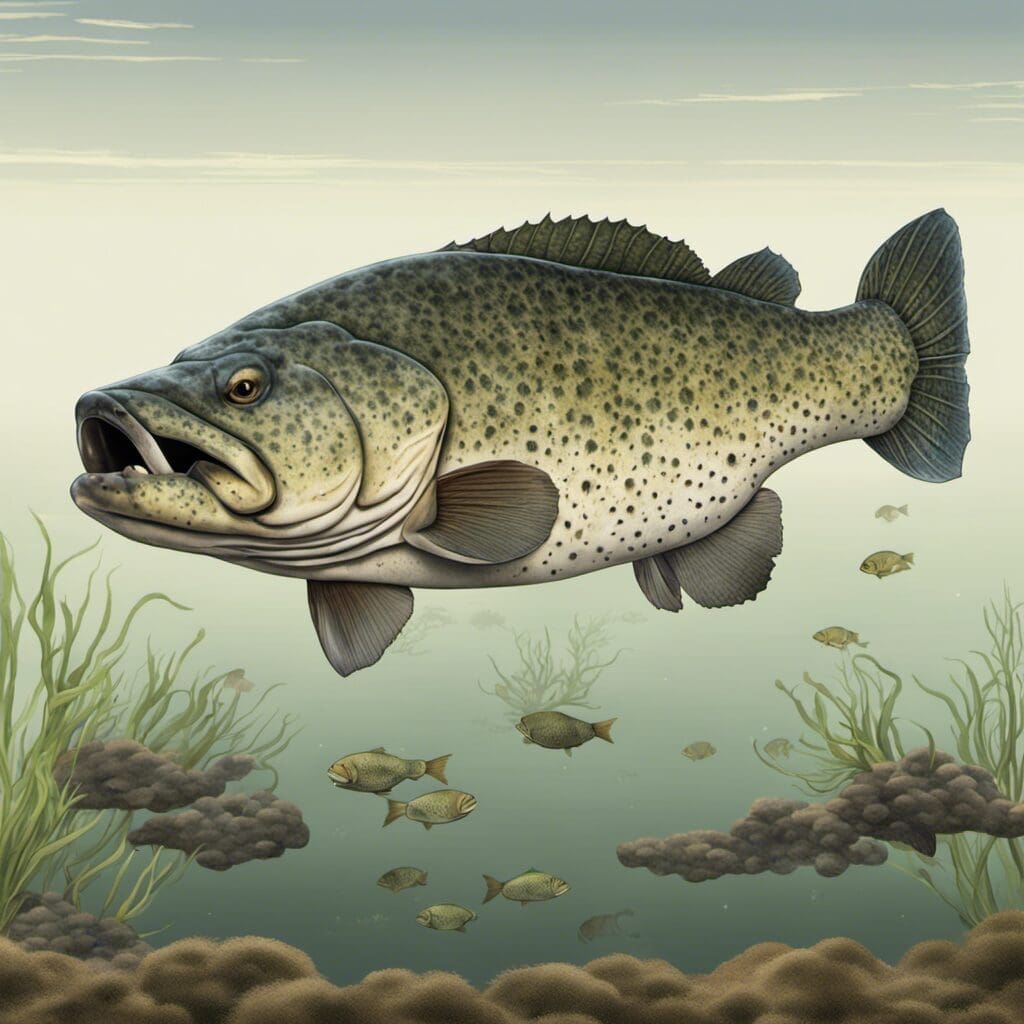Introduction
Species Name: Murray Cod
Family Name: Percichthyidae
The Murray Cod (Maccullochella peelii) is Australia’s largest freshwater fish and an iconic species in the country.
Conservation Status
Current Status: Critically Endangered
Conservation Efforts:
Conservation efforts for Murray Cod include stocking programs, fish habitat restoration, installation of fishways on dams and weirs, and implementation of size and bag limits by fisheries agencies.
Statistics
| Length (Average) | Length (Range) | Weight (Average) | Weight (Range) | Average Lifespan |
|---|---|---|---|---|
| 80-100 cm | 40-180 cm | 10-16 Kg | up to 113 Kg | 48 years |
Distribution
Regions/Countries:
Murray Cod are native to Australia, predominantly found in the Murray-Darling river system.
Migration Patterns:
Murray Cod do not generally migrate but they do move seasonally within their home range, especially to access breeding areas.
Habitats
Water Type:
Murray Cod prefer freshwater, often in slow-moving sections of rivers and streams.
Depth Range:
They inhabit a variety of depths, from shallow water to depths over 5 meters.
Temperature Range:
Murray Cod can tolerate a wide range of temperatures, from 4°C to 24°C.
When and Where to See
Seasonal Patterns:
While they can be observed year-round, Murray Cod are especially active in the spring and summer months during their spawning season.
Time of day:
Murray Cod are primarily nocturnal, so the best times to see them are in the early morning or late evening.
Best Fishing Locations
Top 10-20 Places:
1. Murray River, NSW/VIC
2. Darling River, NSW
3. Murrumbidgee River, NSW/ACT
4. Goulburn River, VIC
5. Lake Mulwala, NSW/VIC
General Tips:
Murray Cod tend to stick to structures like logs and rocks for protection, so these are the best areas to target.
How to Catch
Preferred bait or lures:
Murray Cod are opportunistic feeders, and will take a wide variety of baits and lures, including yabbies, worms, small fish, spinnerbaits, and diving lures.
Fishing techniques:
Casting and trolling are the most common techniques for catching Murray Cod.
Identification Guide
Color:
Murray Cod are usually a pale green to olive green, with a pale belly.
Shape:
They have a deep, elongated body with a large mouth and thick, rounded tail.
Culinary (if applicable)
Murray Cod has a mild taste with a low oil content, making it a versatile option for many different dishes. Grilled Murray Cod with a simple lemon and herb sauce is a popular recipe.
Additional Information
Behavior:
Murray Cod are solitary animals and are known to be territorial.
Predators and Threats:
Natural predators include larger fish and birds. The main threat to the survival of Murray Cod is habitat degradation.
Cultural/ Historical Significance:
Murray Cod hold a significant place in Indigenous Australian culture, and are featured in various traditional stories and ceremonies.
References and Further Reading
1. “Murray Cod” – Native Fish Australia Link
2. “Fishing for Murray Cod” – Victorian Fisheries Authority Link
3. “Murray Cod in the Murray River” - MDBA Link
4. “Murray Cod – a guide for their culture in Australia” – NSW DPI Link
5. “Widespread hybridization between native and introduced species” – CSIRO PublishingLink
6. “Genetic stock structure of Murray Cod” – Fisheries Link

